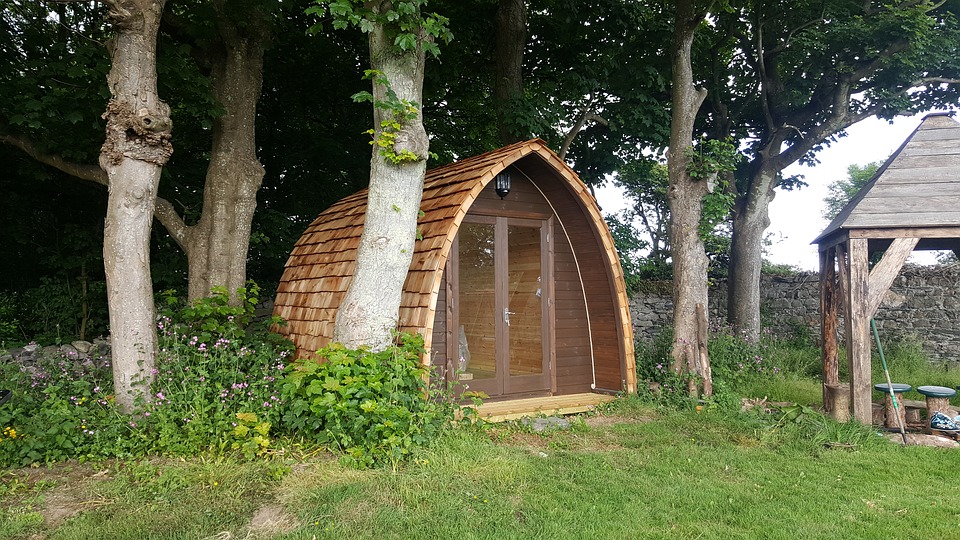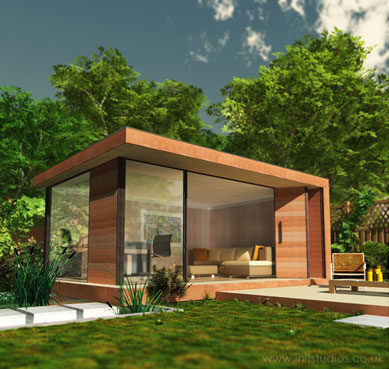An outbuilding is defined as any uninhabited building that’s not attached to the main residence. Outbuildings aren’t permitted for habitation, and if this is the plan they need planning permission regardless. Legally outbuildings can’t be sold or let out as a separate dwelling either (which includes for the purpose of AirBnB rental). Despite this there are so many great uses for outbuildings that can enhance the comfort of family life, whether that’s due to more personal space so family members can retreat to the garden, or if it’s so a parent can work peacefully from a home office.
Table of contents:
- What can an outbuilding be used as?
- Do you need planning permission for an outbuilding?
- How much do outbuildings cost?
- Can you have more than one outbuilding?
- Do you need insurance for outbuildings?
What can an outbuilding be used as?
Outbuildings can be inexpensive to construct yourself, and they can be purchased pre-fabricated, so they’re a fantastic addition to a home that needs more space. Common uses of outbuildings include a home office, a kennel, a games room, a studio for working out or yoga, and even saunas and steam rooms. All of this is allowed under permitted development (without planning permission) if the outbuilding adheres to certain limits put in place.
Some local authorities have placed Article 4 restrictions on certain areas which means they have revoked permitted developments. Even if you’ve never heard mention of Article 4 in your area or when you bought your house, it’s worth checking.
Do you need planning permission for an outbuilding?
If your home is a flat, maisonette, or building that’s been converted from a different use, you need to check with your local authority regarding planning permission as this can be different from a house. For a house that’s not on designated land (national parks, conservation areas etc.) there are permitted development rights for outbuildings.
Outbuildings can go ahead with the following conditions:
- No outbuilding should be built further forward than the front elevation
- No more than half the area of the house (as it stood on 1 July 1948) can be built as an outbuilding, which means that a conservatory built in 1960 does not count as the area of the house
- No balconies, platforms or verandas
- If the outbuilding is within 2m of the boundary it has a maximum height of 2.5m
- Outbuildings must be single storey with maximum overall height of 4m with a dual pitched roof and 3m for any other roof
- Outbuildings must have a maximum eaves height of 2.5m

How much do outbuildings cost?
The price/cost of an outbuilding can vary largely on what it is that you want. If you want a small pre-fabricated summer house, then this can be bought and installed for less than £1000. These can be perfect for sitting in the sun and enjoying a book but they aren’t that big so not ideal for entertaining. They also aren’t insulated so would be no good as a home office.
| Outbuilding Type | Estimated Cost |
| Pre-fabricated summer house | £1000 |
| A sauna or steam room | £3000 |
| Small office/workshop/studio space | £9000 |
| Garage or car port with concrete base | £10,000 |
Can you have more than one outbuilding?
Realistically since you only have a certain amount of permitted development floor space, the average house in the UK wouldn’t allow for more than one outbuilding purely down to size and limitations on where the outbuilding can be constructed. In this case both outbuildings would be pretty much useless due to the size they’d have to be! It would be much more sensible to build one outbuilding as big as permitted development allows.
Do you need insurance for outbuildings?
Outbuildings and sheds are typically covered by home insurance and contents insurance policies but it’s a good idea to check this with your insurer, and to provide them with details of the contents too. If your outbuilding is home to an expensive home office set up it’s probably worth taking out itemized contents insurance, especially as this is instrumental to your career!

For more information, help or advice with your outbuilding project or materials, contact us on 01752 692 760 or use our live chat at the bottom right corner.





